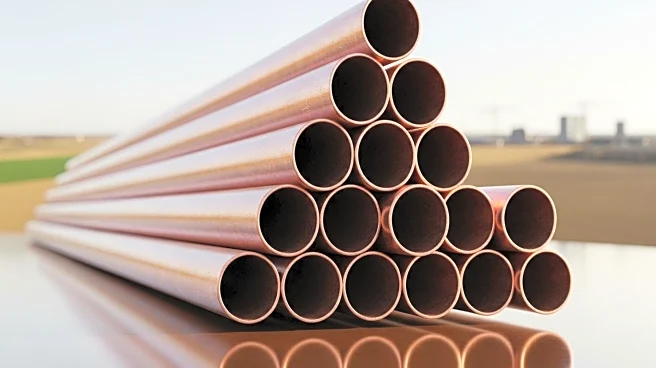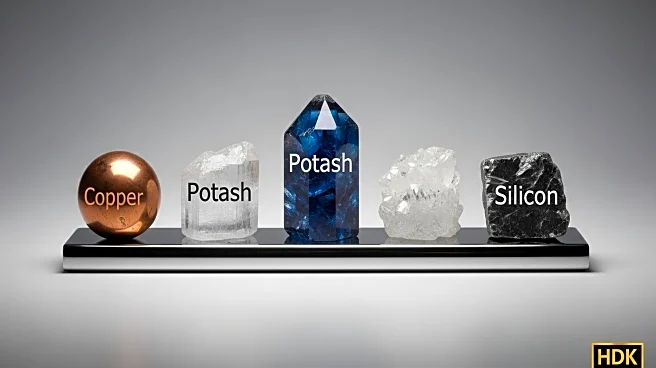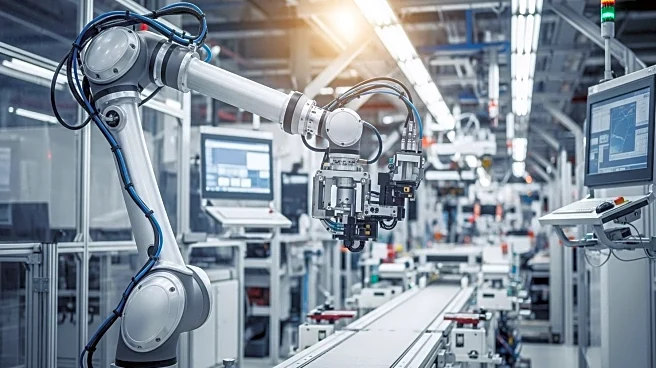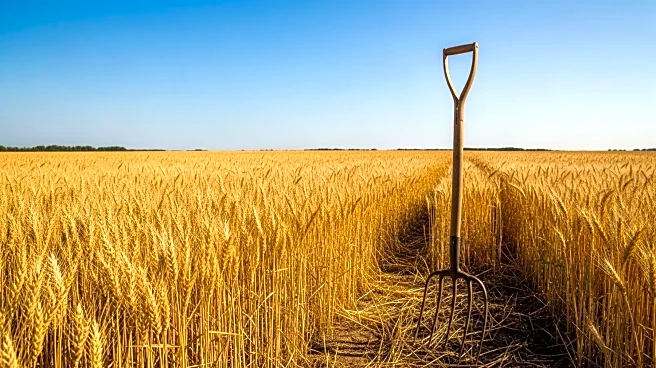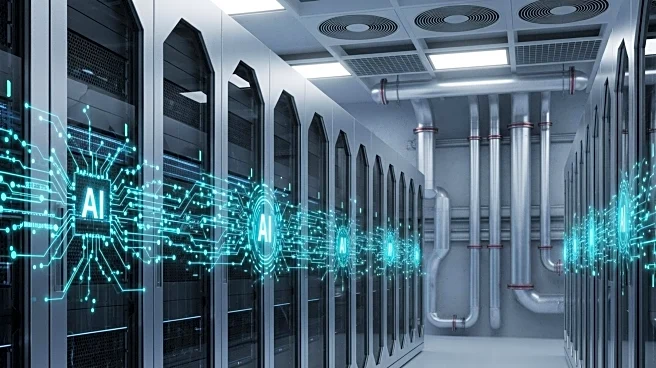What's Happening?
Copper is projected to see a significant increase in demand, rising by over 16% by 2025, driven by its critical role in agriculture and infrastructure. Copper's exceptional properties, such as electrical conductivity, corrosion resistance, and malleability, make it indispensable for modern farming systems, irrigation, renewable energy installations, and large-scale infrastructure projects. As emerging economies expand and developed nations modernize, copper demand is set to grow steadily, even as supply faces challenges. The metal is vital for energy grids, water supply, smart farming equipment, and sustainable infrastructure projects globally. The demand is fueled by agricultural modernization, infrastructure expansion, and the renewable energy revolution, with copper consumption skyrocketing due to its fundamental role in wiring and electrical systems.
Why It's Important?
The projected rise in copper demand has significant implications for various sectors. In agriculture, copper is crucial for electrified equipment, smart sensors, and advanced irrigation systems, supporting precision farming and mechanization. In infrastructure, copper is essential for energy transmission, water management, and communication systems, particularly in emerging markets investing in transportation and smart city projects. The renewable energy sector also relies heavily on copper for solar panels, wind turbines, and electric vehicle infrastructure. As copper demand increases, stakeholders must strategize to manage higher project costs and supply risks, emphasizing recycling and efficient resource use. The metal's role in supporting technological innovation and sustainability targets underscores its irreplaceable position in modern systems.
What's Next?
As copper demand continues to rise, stakeholders in agriculture and infrastructure must adopt smarter, data-driven decisions regarding equipment upgrades, energy savings, and recycling to manage higher copper costs and supply fluctuations. Infrastructure developers should incorporate sustainable copper usage strategies, recycling programs, and digital tracking to forecast needs and optimize investments. Policymakers will play a vital role in guiding responsible mining, trade, recycling incentives, and emissions regulations to ensure availability and affordability while balancing environmental impacts. Technology providers will be essential for maximizing copper's lifecycle value, and the financial sector can develop innovative contracts and insurance products linked to copper supply and prices.
Beyond the Headlines
The increasing demand for copper highlights broader sustainability challenges and opportunities. As supply constraints intensify, recycling and sustainable innovations become crucial in the copper value chain. Scaling up recycling of copper scrap is not just a sustainability tactic but a necessity to augment primary mined supplies. Research into alternative materials, such as aluminum, is growing, although substitution remains limited in high-performance systems. Efficient design, component re-manufacturing, and intelligent management of copper-intensive assets support both cost savings and sustainable operations. Digitalization and satellite-based remote monitoring help track resource usage and emissions, streamlining flow from mining sites to final installations.
